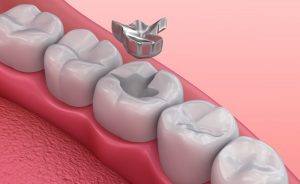 Normally, when you go to the dentist there are two consequences. You will say that you’re all right (although you’re certainly supposed to floss more) and in six months they’ll see you or you’ll say the dreaded word … cavity.
Normally, when you go to the dentist there are two consequences. You will say that you’re all right (although you’re certainly supposed to floss more) and in six months they’ll see you or you’ll say the dreaded word … cavity.Don’t worry, you are not alone. Nearly 90 per cent of individuals had a void in their lives. Your dentist can take care of the hole fairly easily and with ease by bringing in a filling. And, if you are one of those people who already either had or have a hollow, here is what you need to know about fillings.
What is filling?
Clearly put, a filling is precisely as it looks. This is a tool used to fill up the tooth with a hole called a “cavity.” These gaps may be caused by rotting of the tooth, splitting from grinding the teeth or some other form of trauma.
Filling the hole delays or prevents the cavity’s development, so that the tooth can restore normal operation. Can bacteria expand if left unchecked. When the bacteria enter the tooth’s interior, or “root,” you’ll require a more complex operation called a root canal.
What are the fillings made from?
Today, dentists use five main forms of fillings. That one has their own minuses and plusses. As a guideline, the dentist can prescribe one or two choices depending on a variety of variables. The 5 styles are:
- Cast Gold fillings – very strong and durable but will cost a lot more than some other options and will take at least two visits to put in.
- Silver fillings (also known as Amalgams) – strong, durable and not that expensive but are very visible in the mouth and can lead to cracks and fractures in the tooth down the line.
- Tooth-colored composites – these fillings are hard to see in the mouth and bond to your tooth for extra stability. They are expensive though and tend to last 1/3 – ½ the time of gold or silver fillings.
- Ceramic – resistant to staining and last a very long time but are just as expensive as gold fillings.
- Glass ionomer – used for fillings below the gum line and with young children, this filling releases fluoride to prevent further tooth decay. It is a weaker material though, prone to wear and breakage.
What happens when you get a filling?
Next, the dentist must give you an anesthetic for the region to become numb. Next comes the hammer. The doctor will use a drill or laser to extract the dent’s decayed portion. If the decay has been cleaned, the dentist must clean the area and make it suitable for filling.
The dentist would then bring in the filling after those steps. The last moves from there are to finish the tooth and polish it. The dentist must be extremely vigilant during this process as the filler remains in the tooth which does not change the patient’s bite. When it improves the bite it will lead to issues such as irritation, pressure and headaches.
We just want to learn that anytime we go to the dentist we’re doing better but sometimes the reality is that we aren’t. Getting your mouth filled will set you back on track with oral safety in such situations. Now that you know what you need to know about fillings, this process shouldn’t be so overwhelming! Dial 203-255-7771 or 203-878-8596 to our desk. To schedule rendezvous today.

